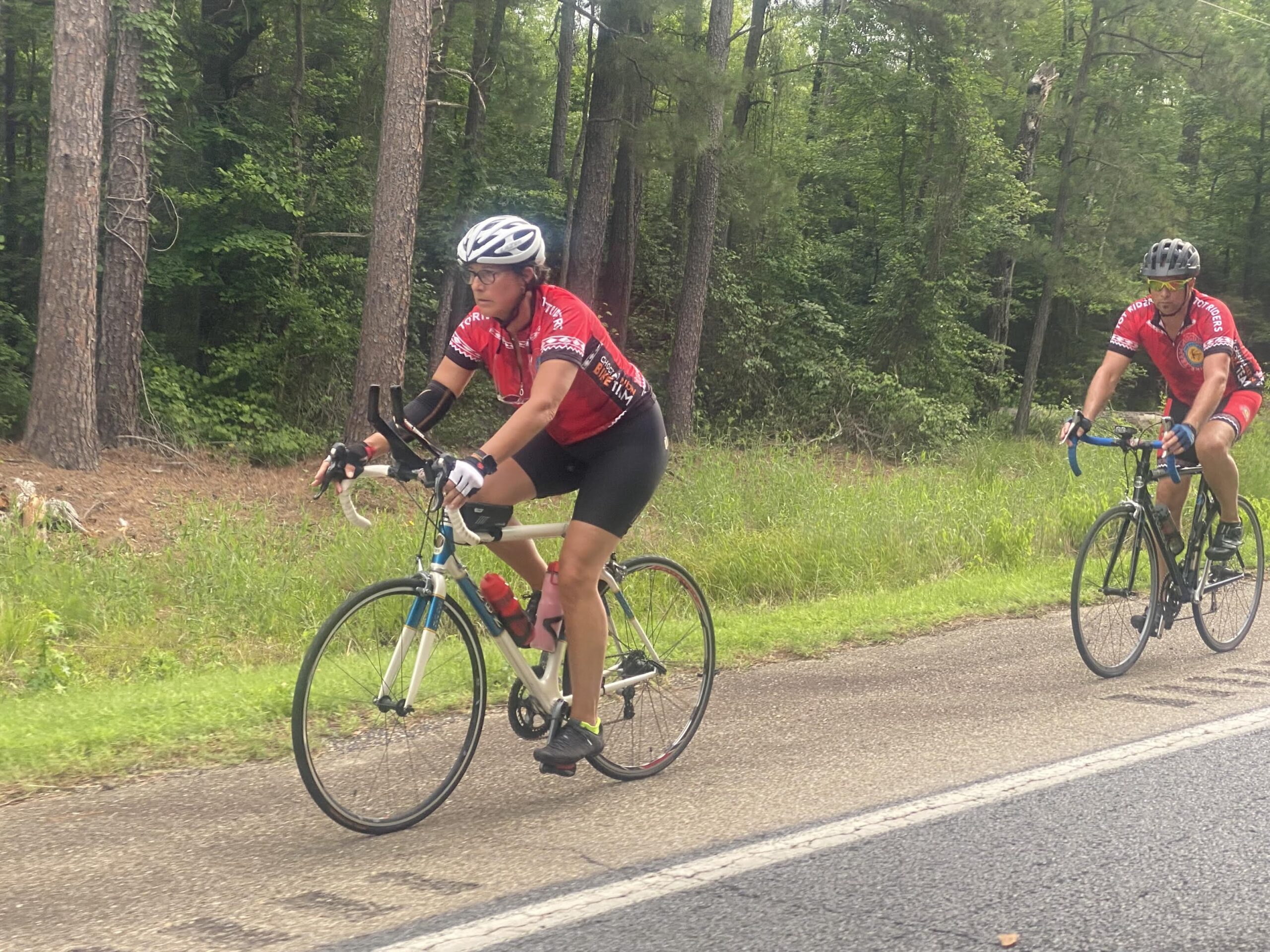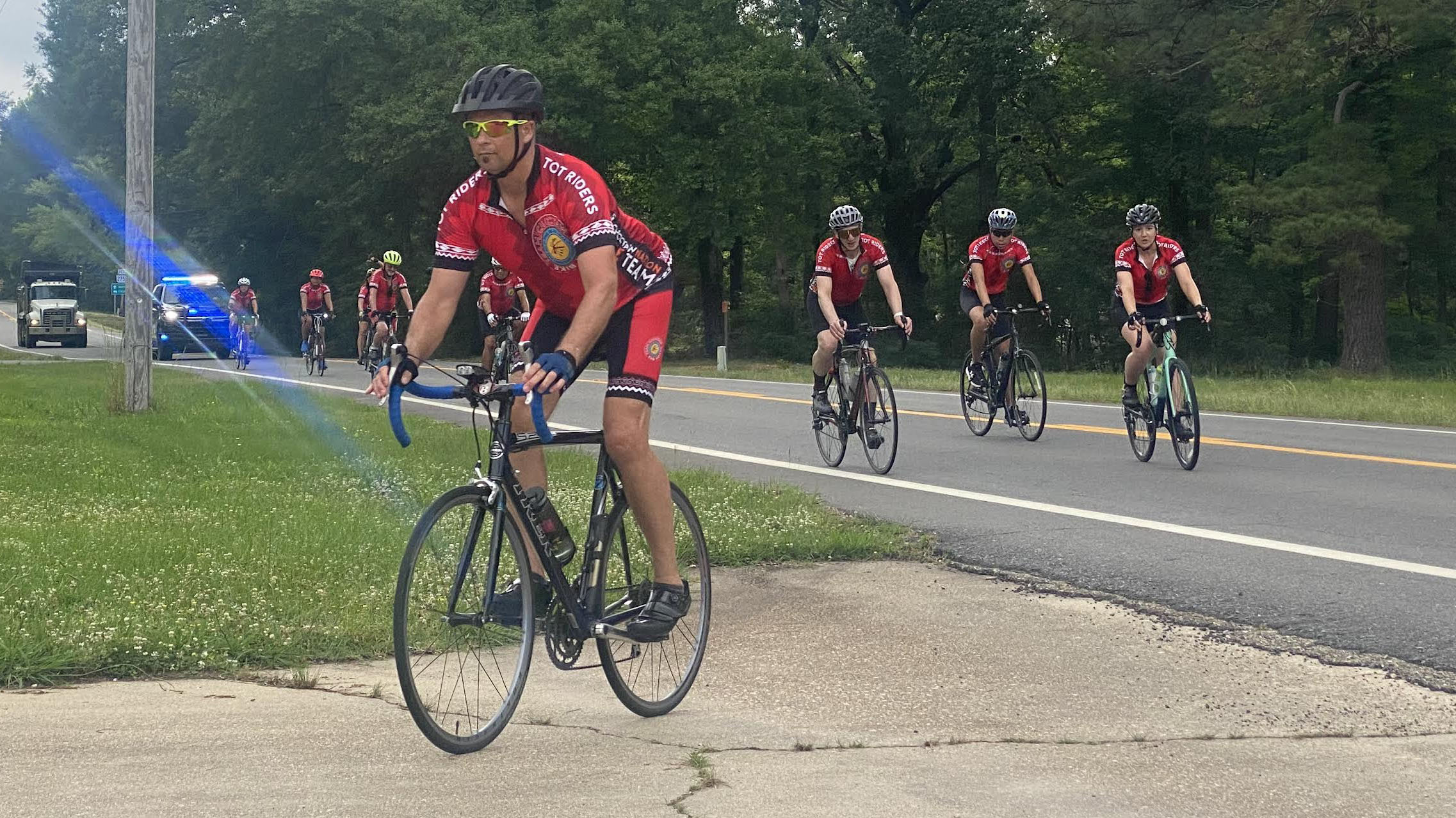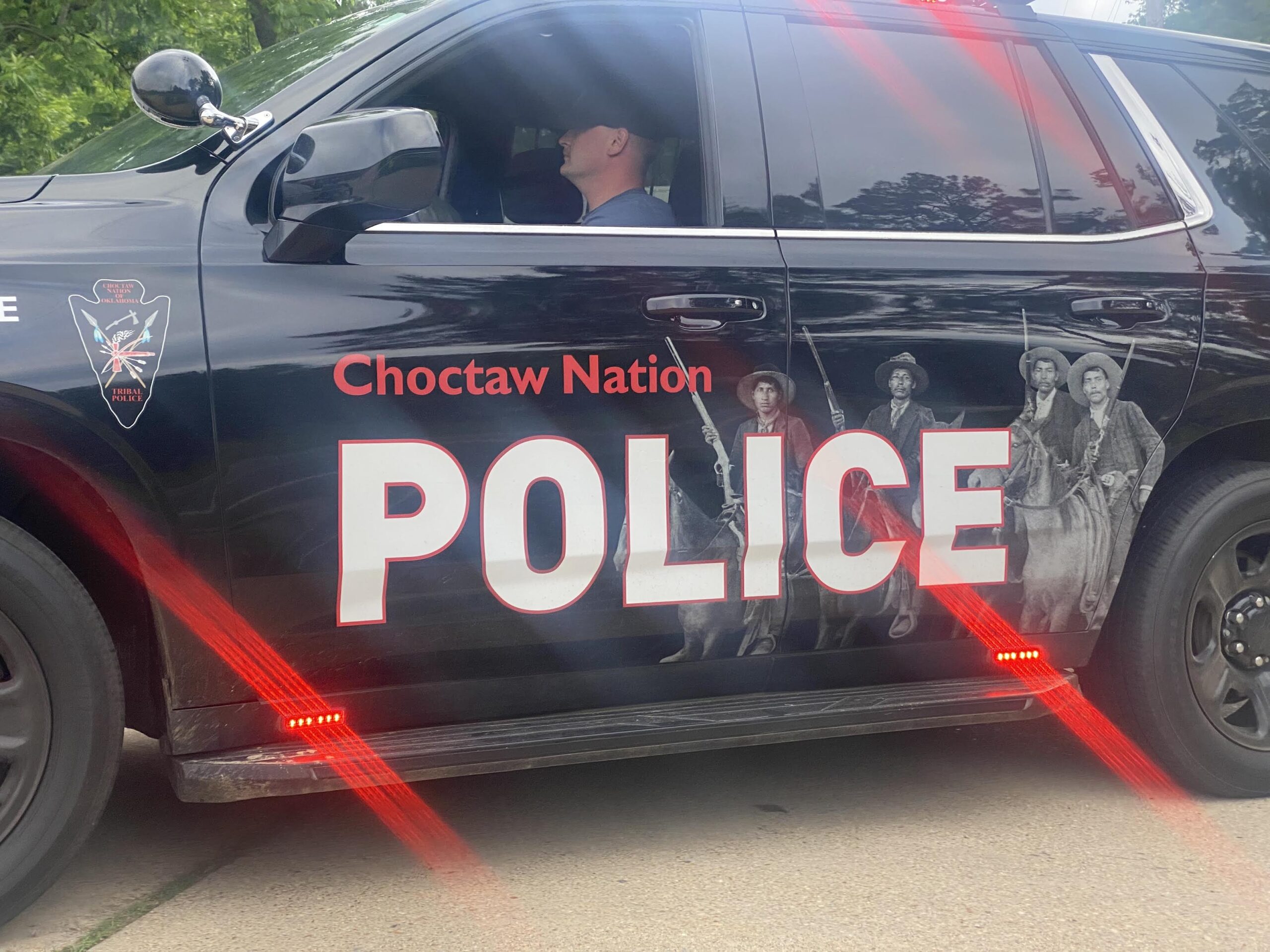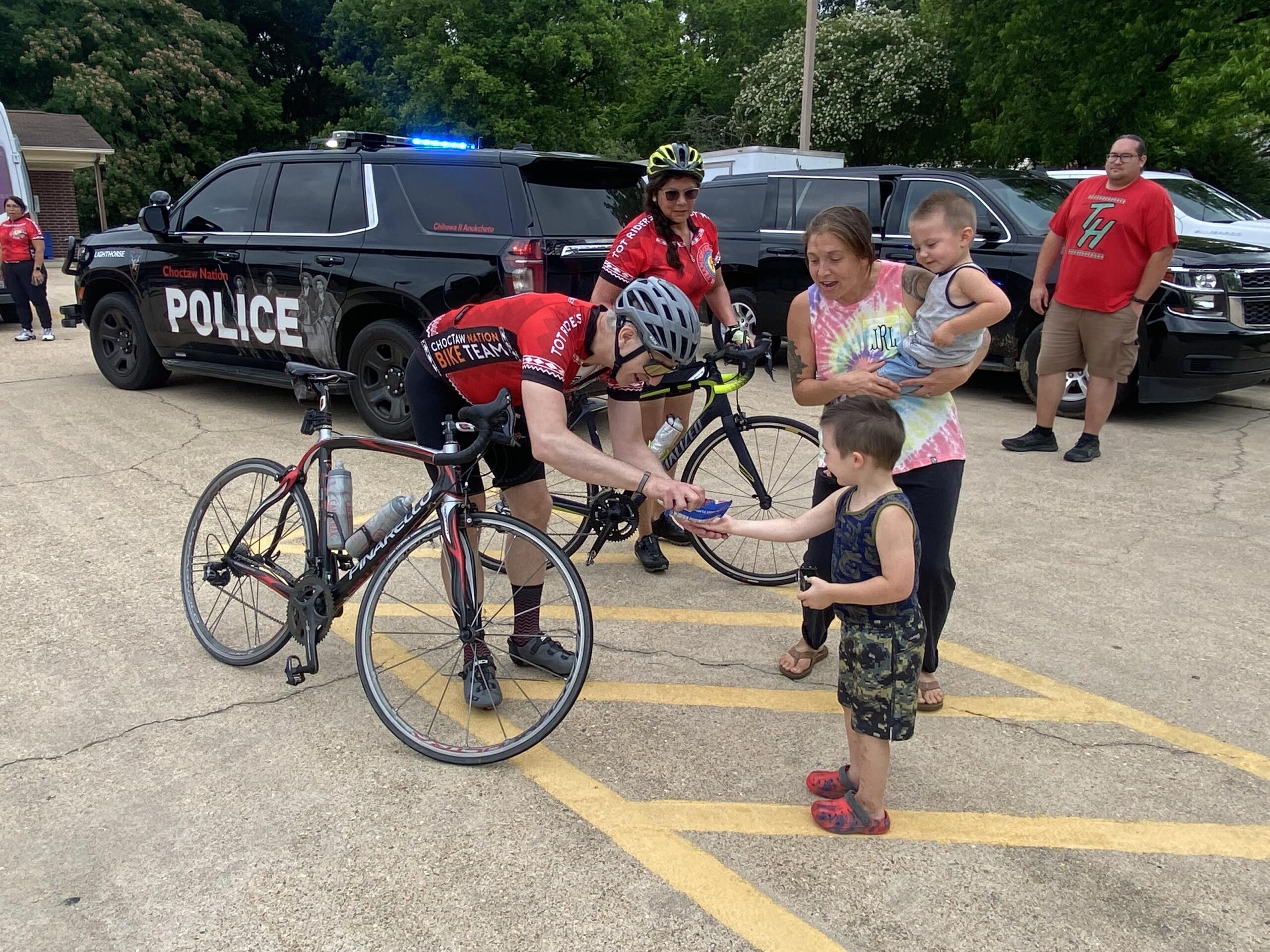This is a Saline River News exclusive, only available on Saline River News.
BANKS, Ark. – The Choctaw Nation Trail of Tears Bike Team made its way through northern Bradley County on Monday morning as part of its annual remembrance ride, honoring the resilience and legacy of the Choctaw people.
The team, composed of nine cyclists and supported by a caravan of vehicles—including a Choctaw Nation Police escort—began their journey on May 17 in Philadelphia, Mississippi. Averaging 60 miles per day, the riders are traveling along actual portions of the Trail of Tears, following historic paths that their ancestors were forced to take nearly two centuries ago, as they make their way to Oklahoma.
After spending Sunday night in Monticello, the group arrived in Warren around 8:30 a.m. From there, they continued northwest to Banks, where they stopped briefly at the Banks Post Office. They plan to stay overnight in Camden before continuing westward.
Their passage through Bradley County carries special significance. The historic Trail of Tears route runs directly through Warren and the northern part of the county. Modern-day trail markers can be seen along several local highways, serving as solemn reminders of the suffering endured by Native peoples during the forced removals of the 19th century.
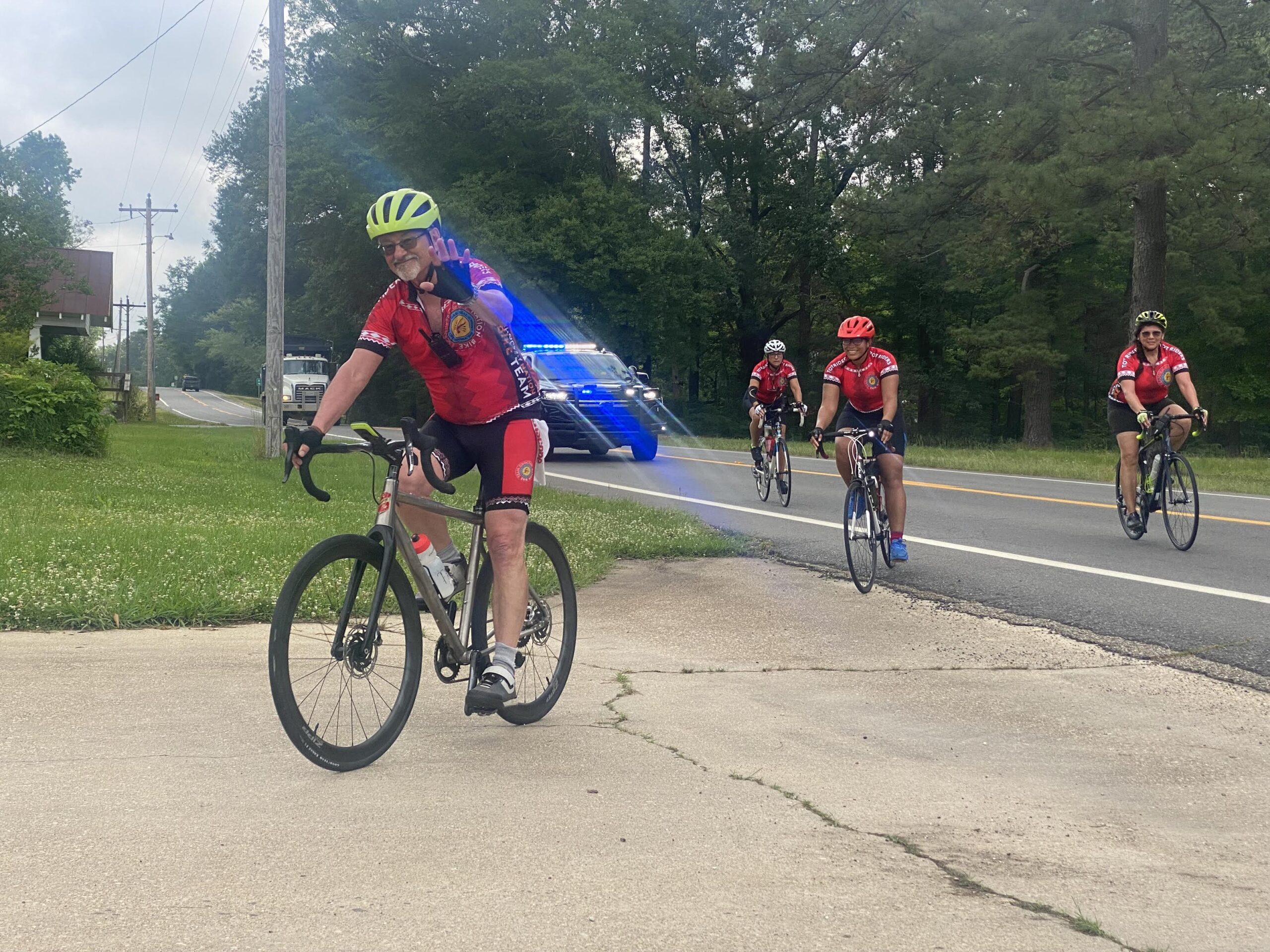
Tribal Community Liaison Adam B. Salazar said the group has been riding the Trail of Tears route for nearly 15 years. The route changes annually, and this year the team is taking the most southern path—one that brought them through Bradley County.
The bike ride is part of a broader mission organized by the Choctaw Nation of Oklahoma. It aims to honor Choctaw ancestors, encourage healthier lifestyles, and promote awareness of Choctaw culture and history.
Jana Boykin, one of the team’s leaders, described the diverse background of the riders, noting that participants come from Oklahoma, Indiana, Oregon, Ireland, and several other places, though most are from Oklahoma.
“Our mission is to do this endurance ride kind of simulating the Trail of Tears walk that our ancestors did in the 1800s,” Boykin told Saline River News. “But our main focus too is to teach our culture and history to these riders that are on this ride today.”
When asked about the ride through Arkansas, Boykin laughed and said, “It’s a little hilly.”
The group is accompanied by two cultural liaisons, who provide education along the way about the Trail of Tears and its lasting impact. The riders entered Arkansas at Lake Village and are now on their third day of travel through the state.
A Legacy of Loss and Resilience: The Trail of Tears
The Trail of Tears represents one of the most painful and unjust chapters in American history. In the 1830s, the United States government carried out a series of forced removals of Native American nations from their homelands in the southeastern United States to unfamiliar territory west of the Mississippi River. The Choctaw Nation was the first to be removed, beginning in 1831, under the Indian Removal Act signed by President Andrew Jackson.
Thousands of Choctaw men, women, and children were forced to leave behind their homes, their land, and the graves of their ancestors. With limited resources and little support, they faced bitter cold, hunger, disease, and exhaustion along the journey. Historical estimates suggest that as many as one in four Choctaw people died along the route.
The path they walked has come to be known as the Trail of Tears—a name that reflects the immense sorrow, suffering, and injustice endured not only by the Choctaw but also by the Cherokee, Muscogee (Creek), Chickasaw, and Seminole peoples who were similarly displaced.
Yet in the face of tragedy, these communities demonstrated extraordinary strength, perseverance, and cultural endurance. Today, rides like the one led by the Choctaw Nation Bike Team serve to honor that legacy, share their stories, and ensure that the memory of those who suffered is never forgotten.
To follow the journey and learn more, visit the Choctaw Nation Trail of Tears Bike Team’s Facebook page: https://www.facebook.com/choctawnationTOTbiketeam.




